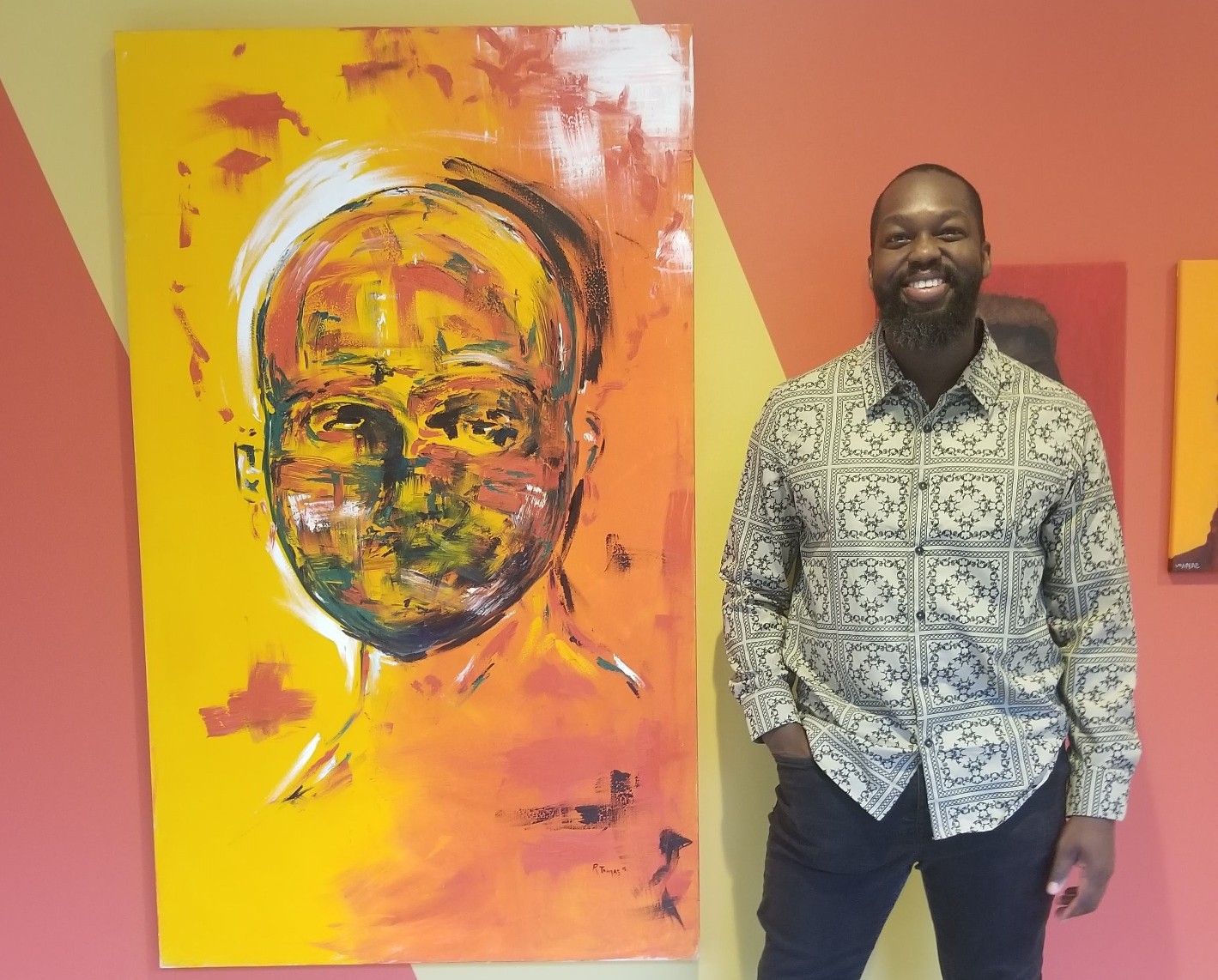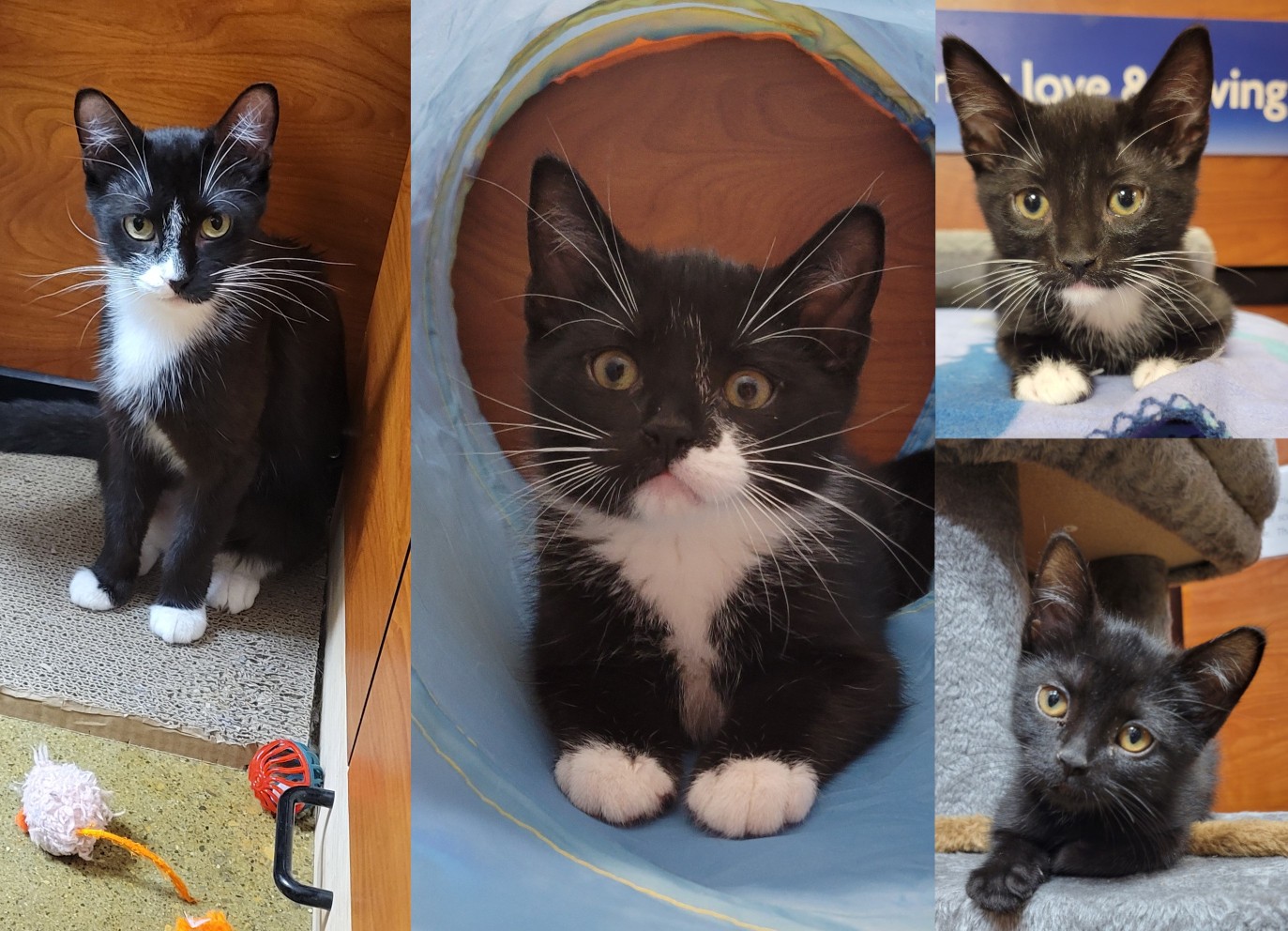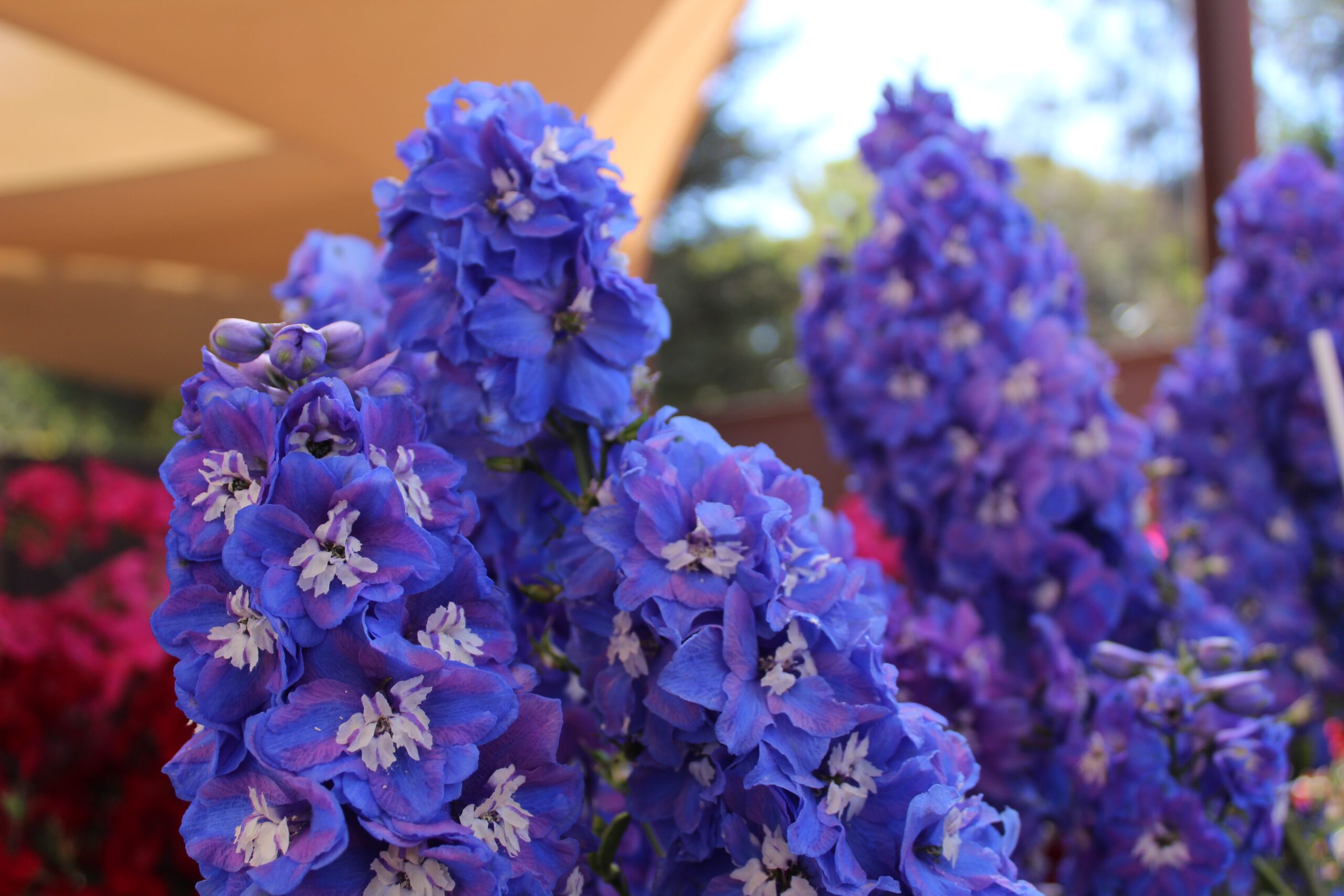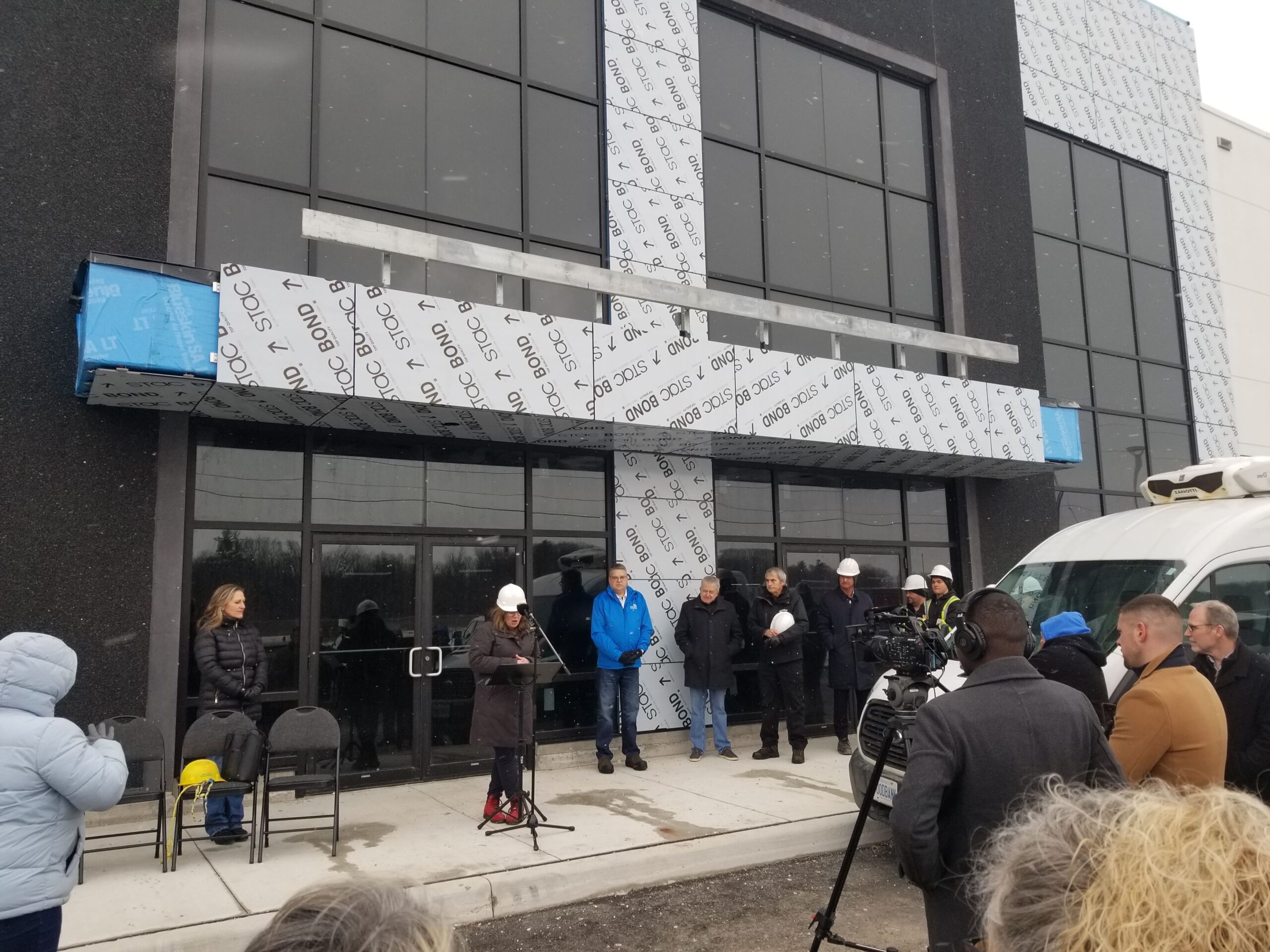Art has always been part of the life of Reynold C. Thomas, one of the artists featured in the exhibit “Bring a Folding Chair” at the Art Gallery of Burlington (AGB). His piece, “Perseverance,” is being displayed at the AGB until Jan. 7, alongside fellow local Black artists Kemahee Baker, Xavier Fuller, and Vivianne Pereira.
He remembers always painting and drawing as he grew up, and he was “the go-to bubble letter guy at school.” Thomas’ creative process is focused on self-discovery, and on using his craft as “an avenue for story-telling,” about himself, his family and friends, people he meets. That focus on self-discovery, exploring his own identity, results in deeply personal art that resonates with the viewer. Looking at Thomas’ art, you can feel the emotion through the painting.
While he is largely known for his figurative style of art, Thomas also enjoys letting the theme of whatever he is working on guide the style. “Through theme, I connect with medium. Then, I sit at the canvas, and see if its a minimalist or abstract expression approach,” he explains.
Using different mediums and styles works to challenge Thomas as an artist, so it is a continuous process. After that, it’s “trying to chase an idea — it’s a bit of a high — to see if I can do it again after doing it once.”
First, though, must come inspiration.
Thomas says that he has tried, “For years on end,” to intentionally schedule a painting hour, but it doesn’t work for him. “Nothing comes to me,” he says. Instead, his process involves connecting with his inspirations: those themes of identity and different perspectives. “I call it my ‘search for inspiration,’…going to a show, listening to music. When I find it, I start working through what this connection looks like.”
Through the connections Thomas finds, and then going into his creative process of actually creating his art, Thomas says, “I allow myself to create through the scope of vulnerability.” As he is creating, Thomas is learning about himself, maybe traumas that he’s hidden from himself. He is interested in the idea that “we tunnel through things,” coming out on the other end without really looking or feeling what is happening in the moment. These explorations of self, of difficult experiences, and of vulnerability, are all too rare for men — particularly Black men — to publicly discuss, so there is enormous strength in Thomas’ work.
But at a summertime show for Black artists last year, Thomas found that his themes resonated. While there’s a perception that Black men “have to be strong, [and] be 100% disconnected from emotion — that’s not necessarily true,” he says. He saw other Black artists exploring a “peeling back” of that perception. “What the community is looking for is authenticity — and what vulnerability allows is for that to be possible,” Thomas notes.
“Perseverence,” his piece in “Bring a Folding Chair,” is no different from the rest of his work in terms of delving into identity through vulnerability. In terms of style, though, “There’s not much like that piece,” Thomas says of his body of work.
This piece tells a story about being in a position of leadership within a movement, about “feelings of pressure, but being placed in a position where not being allowed to showcase your vulnerability,” Thomas explains. Through “Perseverence,” Thomas found that human part of leadership, that behind the strength and stoicism, “you could see the pain.” It was like, he says, “Trying to put a mask on but seeing the pain behind.”
That there is strength in showing that you can be vulnerable has been an ongoing lesson for Thomas, not just through the creation of “Perseverence,” but through life-changing events like the births of his daughters. (Thomas’ wife, Alyestal Hamilton, is also a creative, a poet, writer, and speaker, whose debut collection of poems, With Blood, Through Fire, was recently released.)
When Thomas and Hamilton’s first daughter was born, Thomas experienced “a peeling back of the layers. …She’s not asking me to be this super strong person, she’s asking me to be this open person, who allows her to feel safe. Vulnerability allows for a safer environment, rather than a rugged approach.”
Thomas has also found that fatherhood has changed him — a lot. Before having kids, he says, “I knew exactly what I want[ed] to create. This is my story, this is my approach. Now, becoming a father to two little girls, I’m learning every day. I learn from them, from their approach.”
Thomas has found that because art and creativity is part of their lived experience, the girls have a deep connection to art. After all, they see mom and dad live it every day, from negotiating the space each parent needs to create their art, to the academic perspective of technique. And, of course, the fun part.
The couple never forces art on their daughters; Thomas jokes, “If you decide to be a scientist, you’ll still be in the family.” However, at five and two years old, the girls are already critiquing Dad’s work (“It’s good, but I’d try this…”), so it looks like art has already embedded in them.
When he’s not at home, or creating his own art, Thomas is teaching it. He teaches “Figuration,” his business and his figurative style, virtually and in person at OBJX Studio in Toronto every week. It’s drop-in style, because Thomas wanted to create something for the community without the pressures of a traditional life drawing class, to “come in, draw, have fun, and still come away with something.” You don’t have to be a master artist; this is for anyone, whether artist or art enthusiast.
Vulnerability is the key word here, too: with live models and live musicians, Thomas works to create an environment “to allow for vulnerability to be the driving force…to open up the space to try something new.” Regardless of whether you end up being good at art, Thomas wants every participant to enjoy the experience, and use art as a way to connect with community. It’s “allowing art to become a catalyst or catapult for connection.”
Find more information on Figuration at www.rthomasart.com. You can also follow Thomas on Instagram (@renzzzart), and, of course, don’t forget to drop into the AGB to see “Perseverence” at the “Bring a Folding Chair” exhibit, co-curated by Halton Black Voices and the AGB, before January 7.




